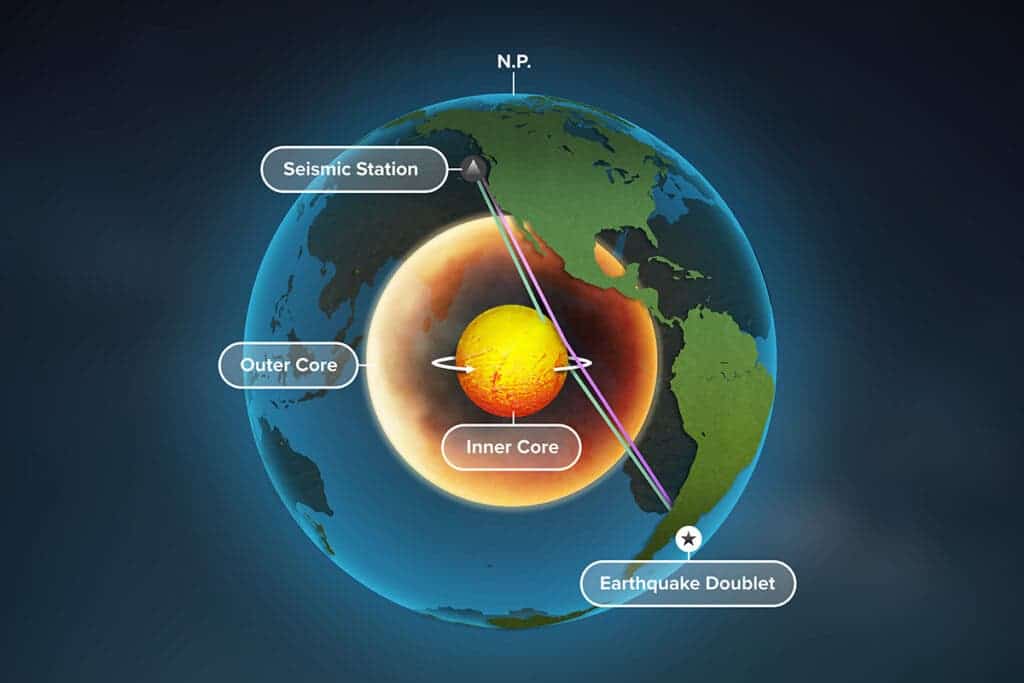
Geologists have been debating for decades whether the planet’s inner core is rotating or not. New evidence obtained by Chinese researchers seems to hint towards the former, according to seismic data.
The motion of molten iron alloys in the Earth’s outer core acts as a planetary dynamo, generating a massive magnetic field called the magnetosphere. It extends for several tens of thousands of kilometers into space, well above the atmosphere, sheltering the planet from the charged particles of the solar wind and cosmic rays that would otherwise strip away the upper atmosphere, including the ozone layer that protects life from harmful ultraviolet radiation.
However, there is still much we don’t know about how the planet’s core interacts with complex physics to generate magnetic fields. For instance, the north and south poles have “wandered” and flipped periodically over Earth’s geological history, and these behaviors aren’t completely understood.
For decades, the motion of the inner core has been the realm of theoreticians. But in 1996, Xiaodong Song, now a geology professor at Peking University in China, detected seismic waves passing through the inner core that suggested differential rotation of the inner core relative to Earth’s surface.
These initial findings were rather quickly dismissed, with other studies pointing towards the reflection of seismic waves off the ununiform inner core boundary, which can act like canyons or mountains.
For their new study, Song and colleagues — including researchers at the University of Illinois at Urbana-Champaign — reviewed seismic data from a range of geographical locations across the world. The data also included repeating earthquakes, known as doublets, that occur in the same spot over time.
These doublets proved essential because they offer the separating factor enabling scientists to distinguish changes due to variation in relief from changes due to movement and rotation of the planet’s core.
According to the findings, some of the earthquake-generated seismic waves penetrated the iron layer right below the inner core boundary and changed over time. This shouldn’t have happened if the inner core were stationary, the researchers wrote in the journal Earth and Planetary Science Letters.
“Importantly, we are seeing that these refracted waves change before the reflected waves bounce off the inner core boundary, implying that the changes are coming from inside the inner core,” Song said.
“This work confirms that the temporal changes come mostly, if not all, from the body of the inner core, and the idea that inner core surface changes are the sole source of the signal changes can now be ruled out,” he added.
In a previous study while he was a professor at Columbia University, Song and colleagues estimated that the inner core rotates in the same direction as the Earth and slightly faster, completing its once-a-day rotation about two-thirds of a second faster than the entire Earth.
While that might not seem like a lot, it’s still some 100,000 times faster than the drift of continents — and over time it adds up. Over the past 100 years that extra speed has gained the core a quarter-turn on the planet as a whole, the scientists found.






